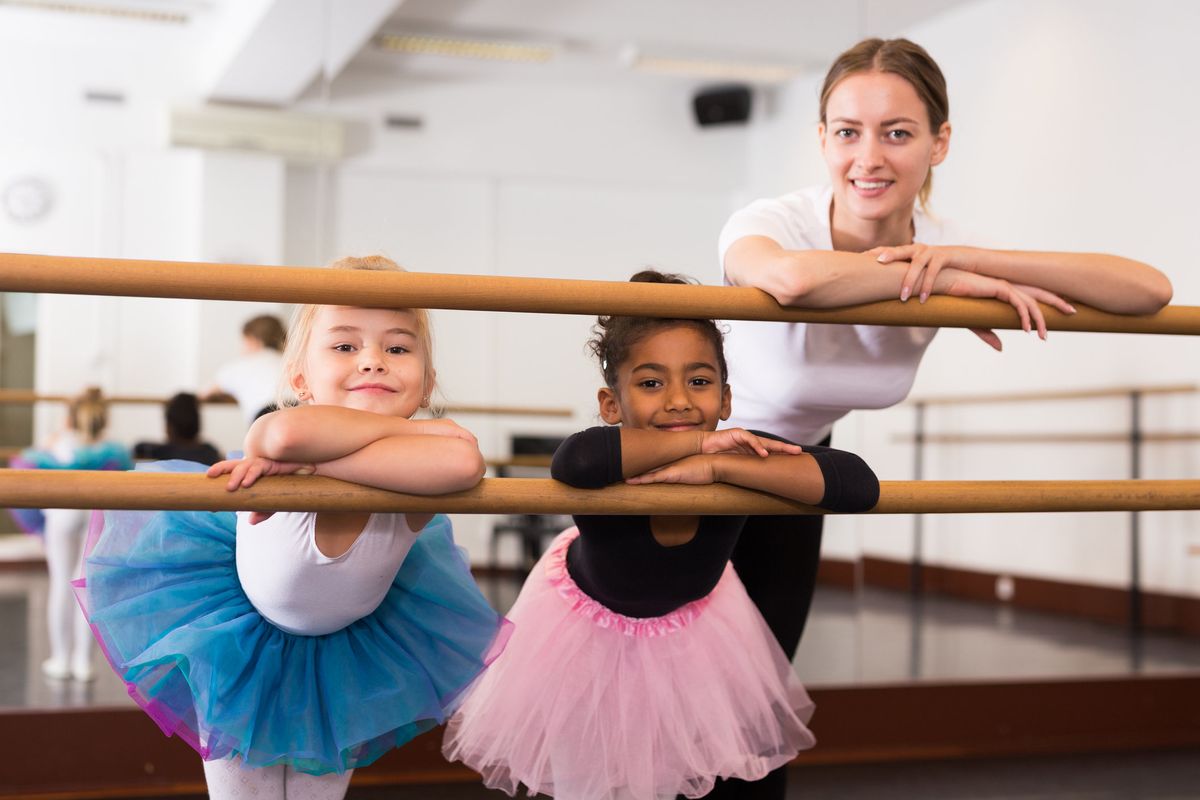
Though this school year comes with uncertainty due to the pandemic, and classes may be online where you are, it still holds true that how a teacher conducts class at the start of September can set the tone for the entire year. Taking the first few classes to establish expectations and break the ice can mean the difference between a harmonious classroom and total chaos. Here are eight ways to put your best foot forward.
Introduce Yourself
This may sound like a no-brainer, but take the time to tell students who you are. “I used to assume students would show up and have read my bio and understand what modern dance is,” says Elizabeth Wright, principal dancer with Lori Belilove & The Isadora Duncan Dance Company and modern dance instructor at South Carolina Governor’s School for the Arts & Humanities in Greenville. “Often, that’s not the case.” Take a few minutes to tell your students what you bring to the table. Contextualizing your knowledge and experience will help them understand where they are in a larger dance lineage, too.
Break the Ice
An opening circle (virtual or in-person) can be an opportunity for students to say their names and pronouns, but some might be afraid of speaking up. Ease their anxiety with simple, fun questions. Claire Augustine Hixon, dance teacher at J. L. Long Middle School in Dallas, Texas, often puts students in pairs, with prompts like “If you were a superhero, what power would you have?” or “What’s your favorite memory involving food?” She then has the pairs introduce their partners to the entire class.
Get Them Moving
“It’s really important to get students moving right away, so it’s an expectation that’s set,” says dance teacher Laura Migas of Ravenswood Elementary School in Chicago. “I try to spend as little time as I can talking in that first class.” She has students share their names and pronouns and briefly introduces herself, but then it’s time to move. She favors Anne Green Gilbert’s BrainDance to warm up K–8 students and then afterward will play a name game.
Assess Students’ Technique Level
Seeing where students are in their training lets you tailor your material to suit their needs. At the Governor’s School, Wright likes to start with improvisation exercises to see how her students move. “It’s new to all of them and puts them in a position where they’re a little uncomfortable,” she says. “I do a lot of walking improvisations, adding complexities along the way. It puts everybody on a level playing field.” Augustine Hixon usually starts the year off by keeping combinations small and simple, so students can build confidence with less material. This summer she assessed technique of new and returning members of her performance group by having them submit videos. From those, she offered feedback on what was working and what to improve.
Communicate Expectations
Decide whether or not you want to write a syllabus. (Depending on your school and the age of your students, it may be required.) Use it to clearly outline what your class will cover, your classroom code of conduct, how students will be evaluated and how they can reach you.”My syllabus includes the national and state dance standards,” says Wright. “It’s a helpful starting point for discussion.” She keeps it as a general outline of what she’s going to cover for the year, in order to allow room for changes based on the class. Migas prefers to send a welcome letter to parents instead of a syllabus.
Include Etiquette
Communicate how you want class to run and what classroom etiquette you expect to see. Some students may not know the unspoken rules and procedures commonly used in dance classes. “One of the first things I teach is my exit,” says Augustine Hixon. “Thank-yous are big for me. If a dancer knows how to say ‘thank you,’ that helps them for life.”Similarly, make sure you communicate how feedback will be given. “It’s important to talk about constructive criticism,” says Wright. “Explain that it’s a positive.” If you’re teaching in person and plan to use hands-on corrections, let students know ahead of time. Not all dancers are OK with being touched in class, and you should get their consent at the beginning of the year and reconfirm their consent each time a correction is necessary.
Collaborate on Class Culture
Migas has found success working with students to create a classroom structure they can all take ownership of. With prompts like “What do we want our class to look and sound like?” and “What does a respectful class look like?” she and the students write down their expectations and agreements for class. She says this works best with younger children when she offers a couple of examples and lets students choose between them.No matter how you choose to start the year, be mindful that your students are watching, listening and learning from day one. “It’s almost not what you say, but how you say it,” says Wright. “Think through the relationship that you want to have and how the cues you give at the beginning of the year support that. It’s very powerful.”
Returning to School During COVID-19
Whether in person or online, it’s important to be flexible and keep a few things in mind.
- You may have reduced class sizes or have to space students farther apart in class. Laura Migas, for instance, will have her creative dancers find “the perfect spot” not near anyone else or the walls or mirror, and she will mark it with tape, so young students can’t move it.
- With most summer programming canceled, students may return to classes after being more sedentary than usual.
- You can use students’ COVID-19 technology crash course to your advantage. Now that students are adept in programs like Zoom and Google Classroom, in what creative ways can you use them?
- After months apart, building community among your students will be even more important than usual.




